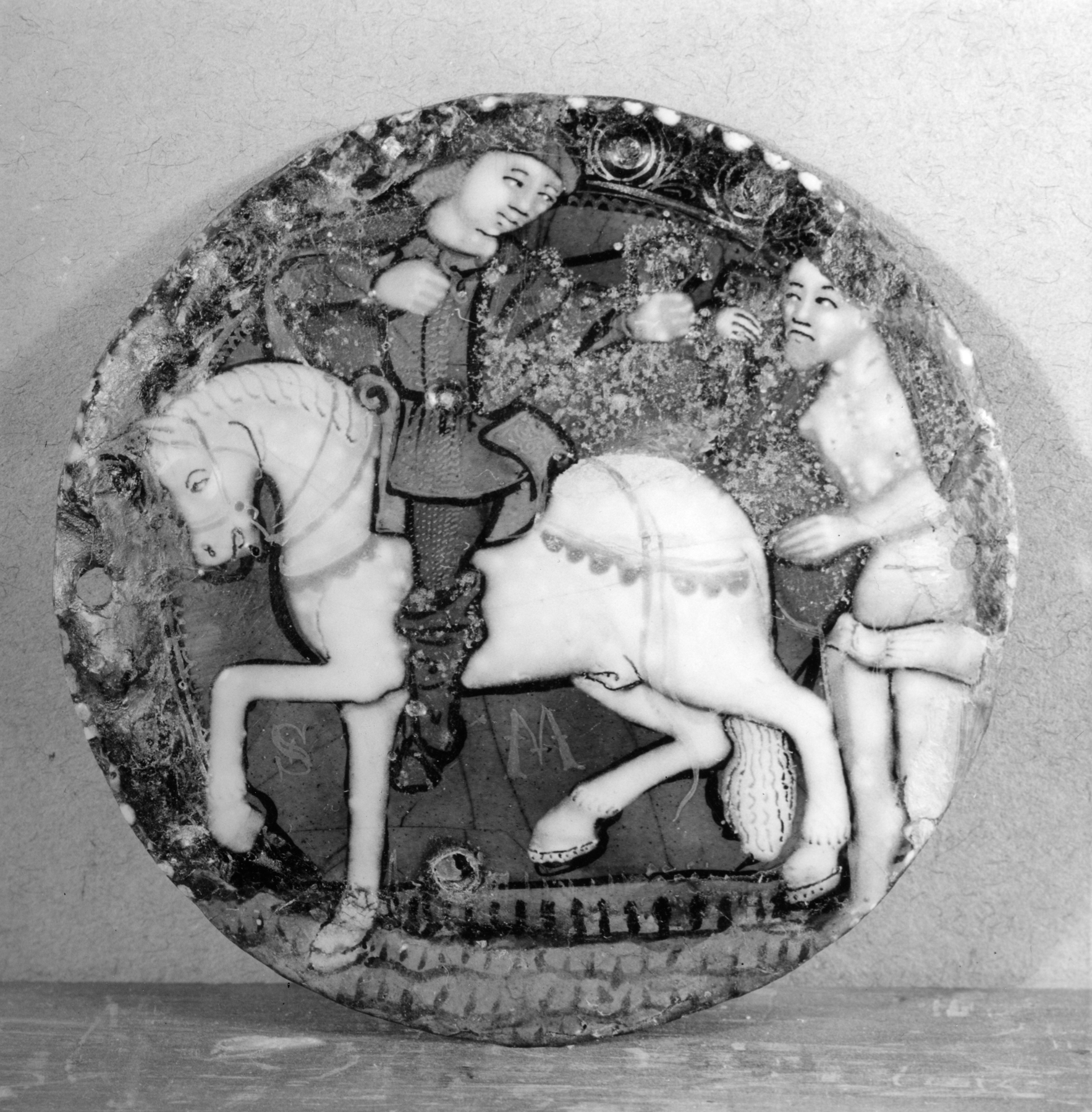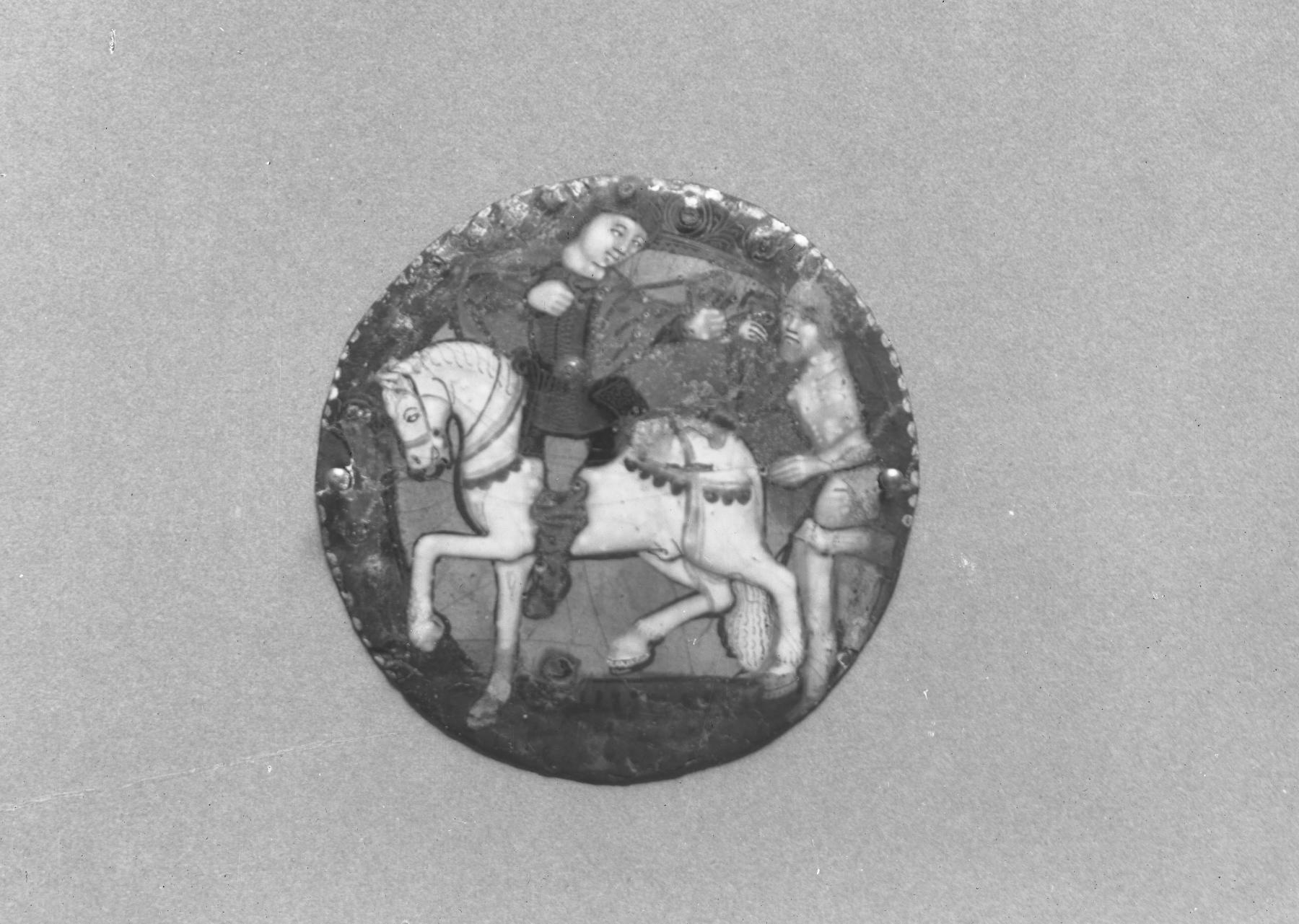St. Martin and the Beggar
(Renaissance Europe )
The hat badge depicts St. Martin and the beggar, represented according to the usual iconographic type: the youthful saint, riding a horse, turns in his saddle towards the beggar and cuts his cloak in two to share it with him. Very often the beggar was represented as a cripple in rags with a wooden leg. Here he is naked, except for a loin-cloth.
The border is studded with "jewels" in raised enamels over foil spangles, with gilt scrolls between, and an outer line of drops of white enamel. Inscribed in faded gilding in the blue ground between the legs of the horse: SM (Sanctus Martinus).
Inscription
Provenance
Provenance (from the French provenir, 'to come from/forth') is the chronology of the ownership, custody, or location of a historical object. Learn more about provenance at the Walters.
Sale, Galleria Sangiorgi, Rome, April 21, 1902, lot 340; Henry Walters, Baltimore, 1902, by purchase; Walters Art Museum, 1931, by bequest.
Conservation
| Date | Description | Narrative |
|---|---|---|
| 10/14/1940 | Treatment | coated; cleaned |
| 4/26/1961 | Treatment | cleaned; loss compensation |
| 1/7/1963 | Treatment | cleaned; loss compensation; coated |
| 1/22/1980 | Examination | examined for condition |
| 4/21/2003 | Examination | examined for condition |
Geographies
France, Limoges (Place of Origin)
Measurements
Diam: 2 1/2 in. (6.4 cm)
Credit Line
Acquired by Henry Walters, 1902
Location in Museum
Not on view
Accession Number
In libraries, galleries, museums, and archives, an accession number is a unique identifier assigned to each object in the collection.
In libraries, galleries, museums, and archives, an accession number is a unique identifier assigned to each object in the collection.
44.350




